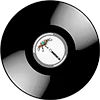
What is dub? Its history, iconic producers, and its influence on techno, ambient and hip-hop. Recommended tracks and where to listen to dub in 2025.
Dub is a music style where the focus is not on the notes, but on the space between them. It’s not just reggae without vocals – it’s an experiment, a sound that dissolves into reverb and deep bass. Dub creates a feeling of slow, psychedelic immersion: in the speakers you hear nothing but vibrations, echoes, delays and droplets of sound.
Brief history of Dub
Dub emerged in Jamaica in the late 1960s. At first, these were instrumental versions of reggae tracks, recorded specifically for DJs – so they could “toast” over them (toasting, the ancestor of rap).
The main pioneers of the genre:
-
King Tubby – the inventor of dub sound
-
Lee "Scratch" Perry – a sonic genius and visionary
-
Scientist, Mad Professor, Prince Jammy, Augustus Pablo
They turned the studio itself into an instrument, playing not guitars but faders, sends, reverbs and echo machines.
Sound characteristics of Dub
-
Deep sub-bass – the low end leads the music
-
Sparse drums with plenty of percussion
-
Echo, delays, filters, reverb – the sound seems to drift and float
-
Removed or fragmented vocals (if any)
-
Frequent use of analog tape and “stretched time” effects
-
Slow, gently “swaying” tempo: 60–80 BPM
Influence and subgenres
Dub has had a huge impact on dozens of genres:
-
Dub techno – atmospheric techno with dub-style processing (Basic Channel, Rhythm & Sound)
-
Dubstep (original) – dark, bass-heavy UK ambient (Skream, Burial, Digital Mystikz)
-
Dub poetry – a fusion of music and spoken word (Linton Kwesi Johnson)
-
Ambient dub – crossover with ambient (The Orb, Banco de Gaia)
-
Electro dub – electronic forms of dub in Europe and Japan
-
Steppas dub – massive bass, ideal for sound systems
Who to listen to
Classics:
-
King Tubby – King Tubby Meets Rockers Uptown
-
Lee “Scratch” Perry – Super Ape
-
Scientist – Heavyweight Dub Champion
-
Mad Professor – Beyond the Realms of Dub
-
Augustus Pablo – East of the River Nile
Modern dub and its influence:
-
The Bug, Iration Steppas, Alborosie, O.B.F, Zion Train
-
Dub FX (live vocal dub)
-
Gaudi, Alpha Steppa, Panda Dub (European scene)
Interesting facts
-
Dub became one of the ancestors of hip-hop and remix culture.
-
Dub sound has been used in films, from “Dredd” to “The Beach”.
-
In Europe and Japan there are dedicated dub festivals and sound system gatherings.
-
Many dub engineers still work exclusively with analog equipment.
Conclusion
Dub is the art of space, where silence can be as loud as the bass. It’s not just a music style, but a way of perception – a dialogue between sound and echo, between rhythm and emptiness. Dub taught us to listen to depth and feel vibration, turning the studio into a living instrument.
From the first Jamaican pioneers to today’s producers, dub has become a philosophy of sound – meditative, hypnotic and always alive. It has spawned entire movements, from dub techno to dubstep, and inspired generations of electronic musicians around the world.
Dub is the breath of bass, the echo of consciousness, the vibration of the universe. It doesn’t just play – it dissolves space and makes the music breathe.

